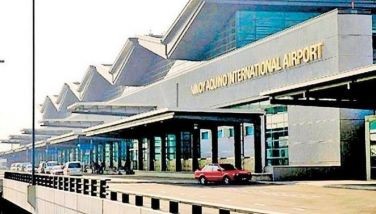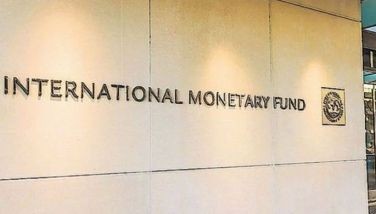Time is (always) of the essence
Though challenging as it may seem, Section 112 of the National Internal Revenue Code of 1997, as amended (Tax Code) allows a taxpayer to apply for the issuance of a tax credit certificate/refund of input value-added tax (VAT) attributable to zero-rated or effectively zero-rated sales, or in case the taxpayer’s registration has been cancelled due to cessation of business or due to changes in or cessation of status of his VAT registration.
It is proverbial in Philippine taxation that tax refunds are in the nature of tax exemptions and hence, strictly interpreted against the taxpayer. Tax refunds, in contrast with tax audit investigations, are generally not prioritized, much less favored, by the Bureau of Internal Revenue (BIR). Thus, a taxpayer claiming VAT refund must comply not only with the substantial, but also with the procedural, requirements prescribed under the Tax Code, specifically on the prescriptive periods in filing the claim.
Section 112 of the Tax Code provides that the taxpayer may file an administrative claim for VAT refund with the BIR within two years after the close of the taxable quarter when the sales were made or within two years from the date of cancellation of registration. The BIR commissioner may grant the claim within 120 days from the date of submission of complete supporting documents.
If the claim is denied or the BIR commissioner does not act on the claim within the 120-day period, the taxpayer may appeal the decision or the unacted claim with the Court of Tax Appeals (CTA) within 30 days from the receipt of the decision denying the claim or after the expiration of the 120-day period.
The above rule may appear basic. But it is not. Several decisions, in fact, have been promulgated by the Supreme Court interpreting Section 112 of the Tax Code.
Six years ago, I had the opportunity to write an article in this Top of Mind column (previously, KPMG Corner) discussing decisions of the Supreme Court on the prescriptive periods in filing the claim for VAT refund, the most important of which is the case of Commissioner of Internal Revenue vs. Aichi Forging Company of Asia, Inc. (G.R. No. 184823, Oct. 6, 2010). The Aichi case established the doctrine of strict observance of the period for filing the judicial claim by way of petition for review with the CTA, the non-observance of which will make the judicial claim premature. The 120 + 30 day period is not only mandatory, but also jurisdictional. It was also clarified that the phrase “within two years after the close of the taxable quarter when the zero-rated or effectively zero-rated sales were made” refers to claims filed with the BIR, and not to appeals filed with the CTA.
The list of cases decided by our courts applying the Aichi doctrine went on until another landmark case, Commissioner of Internal Revenue vs. San Roque Power Corp. (G.R. No. 187485, Feb. 12, 2013), had been decided by the Supreme Court.
In the San Roque case, the Supreme Court held that, as an exception to the mandatory 120 + 30 day period, a judicial claim for VAT refund which was filed with the CTA before the lapse of the 120-day period is considered to have been timely made if such filing occurred on or after Dec. 10, 2003 (date of issuance of BIR Ruling No. DA-489-03) but before Oct. 6, 2010 (date of promulgation of Aichi case). BIR Ruling No. DA-489-03, as a general interpretative rule that may be relied upon by the taxpayers, expressly stated that the taxpayer need not wait for the lapse of the 120-day period before it could seek judicial relief with the CTA by way of petition for review.
Applying the exception to the mandatory 120 + 30 day period in accordance with the San Roque case, the Supreme Court, in the case of Deutsche Knowledge Services Pte Ltd. vs. Commissioner of Internal Revenue (G.R. No. 197980, Dec. 1, 2016), held that although the judicial claim was filed with the CTA on April 17, 2009 17 days only after the taxpayer filed its claim with the BIR], it is undisputed that the said date of filing falls within the period of Dec. 10, 2003 (date of issuance of BIR Ruling No. DA-489-03) but before Oct. 6, 2010 (date of promulgation of Aichi case). Thus, the taxpayer’s judicial claim had been timely filed and should be given due course and consideration by the CTA.
As a result of the clarification on the issues concerning the application for VAT refund in the San Roque case, the BIR issued RMC No. 54-2014 dated June 11, 2014 to summarize the rules on filing and processing of applications for VAT refund.
The most notable provision of RMC No. 54-2014 is that if the claim is not acted upon by the BIR commissioner within the 120-day period, such “inaction shall be deemed a denial” of the application for VAT refund. The claim must already be accompanied by complete supporting documents and the taxpayer is barred from submitting additional documents after he has filed his claim.
Thus, from June 11, 2014 (effectivity date of RMC No. 54-2014), it appears that pending administrative claims for VAT refund were “deemed denied” by the BIR pursuant to the said RMC until Revenue Regulations (RR) No. 01-2017 was issued on Jan. 3, 2017 and took effect on Feb. 4, 2017.
RR No. 01-2017 prescribes the cashier regulations governing applications for VAT refund filed prior to RMC No. 54-2014 dated June 11, 2014.
As a background, RMC No. 49-2003 dated Aug. 15, 2003 allowed taxpayers to file the complete supporting documents within 30 days from the filing of the application for VAT refund, unless given further extension not exceeding 30 days. The claim shall be officially received only upon submission of complete documents. It is only upon such submission that the 120-day period would begin to run.
Subsequently, RMC No. 54-2014 dated June 11, 2014 was issued. As previously mentioned, it appears that RMC No. 54-2014 was being given retroactive effect because pending claims were “deemed denied” upon expiration of the 120-day period from the date the claim was filed even though the taxpayers are still in the process of submitting the complete documents which was previously allowed under RMC No. 49-2003. It presumed that the pending claims were filed with complete documents and the same remained unacted upon beyond the 120-day period.
In the case of Pilipinas Total Gas vs. Commissioner of Internal Revenue (G.R. No. 207112, Dec. 8, 2015), the Supreme Court held that taxpayers have the right to pursue their claims in the manner provided by existing regulations at the time they were filed. Therefore, RMC No. 54-2014 cannot be applied retroactively as this would prejudice taxpayers whose claims were filed and pending before June 11, 2014, the date when RMC No. 54-2014 took effect.
Following the decision in the Pilipinas Total Gas case, there was a need to clarify the tax treatment and processing of applications for VAT refund filed and pending prior to RMC No. 54-2014. Hence, RR No. 01-2017 was issued.
Therefore, claims filed prior to RMC No. 54-2014 shall continue to be processed administratively by the BIR in accordance with the rules prescribed in RR No. 01-2017, as follows: (1) the taxpayer has two years after the close of the taxable quarter when the sales were made to apply for the issuance of a tax credit certificate or refund of creditable input tax attributable to such sales. Before the administrative claim is barred by prescription, the taxpayer must have submitted his complete supporting documents; (2) the BIR commissioner or his duly authorized representative should have decided on the claim within 120 days from the date of submission of complete documents, or from the date of filing of the application, if the taxpayer did not submit additional documents.
However, the following claims filed and pending before the effectivity of RMC No. 54-2014 are not covered by RR No. 01-2017: (1) those filed beyond the two-year prescriptive period; (2) those denied in writing by the approving authority; (3) those granted by the approving authority; and (4) those already appealed to and pending with the CTA unless there is proof of withdrawal of the case.
As it stands, RR No. 01-2017 provided a “remedy” to the retroactive effect given to RMC No. 54-2014. In other words, RMC No. 54-2014 should be applied prospectively, that is, for claims filed after June 11, 2014. Compliance with the procedural requirements, particularly with the prescriptive periods, in a claim for VAT refund is of paramount importance so as not to be denied of a valuable claim.
Maria Ofelia G. Mariano is a manager from the tax group of KPMG R.G. Manabat & Co. (KPMG RGM&Co.), the Philippine member firm of KPMG International. KPMG RGM&Co. has been recognized as a Tier 1 tax practice, Tier 1 transfer pricing practice, Tier 1 leading tax transactional firm and the 2016 National Transfer Pricing Firm of the Year in the Philippines by the International Tax Review.
This article is for general information purposes only and should not be considered as professional advice to a specific issue or entity.
The views and opinions expressed herein are those of the author and do not necessarily represent the views and opinions of KPMG International or KPMG RGM&Co. For comments or inquiries, please email [email protected] or [email protected].
- Latest
- Trending
































